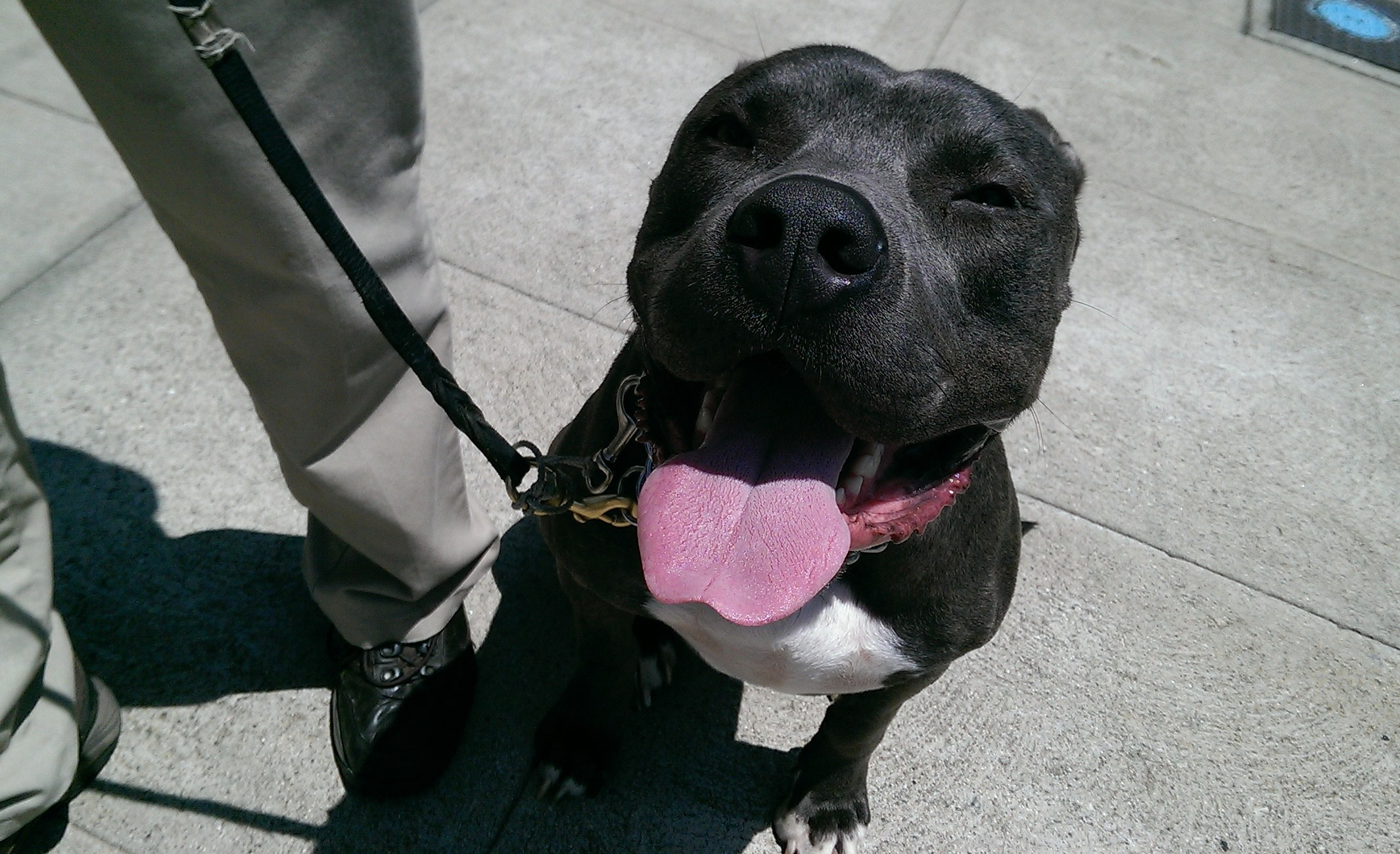SPOTLIGHT
How to teach the perfect sit!
FAQ- Why is my dog good on leash but not off leash?

Welcome back! As some of you may know last month we talked about the right way to socialize your dog in public, where we mentioned that daily walks on leash can be especially important in the process. However, one of the most common and concerning issues in dog training is “leash reactivity”. Your dog may be perfectly calm and content one minute, at the dog park or public place, but as soon as you clip on their leash, everything changes.
Although intensity can vary, the majority of human beings suffer from some level of anxiety on a daily basis, and believe it or not, our dogs do too. Just like humans, a dogs anxiety can be rooted in very primal fears. Anxiety occurs when our primal brain believes that it is missing safety and security, which triggers our fight or flight instinct causing us to be defensive or detached. All of which lead to a majority of the unwanted behaviors that occur on leash; pulling, lunging, barking, whining, and growling just to name a few. The first thing we must realize as owners is that while we see the leash as a tool to keep our pets safe and close to us, dogs can easily interpret the leash as something that is holding them back or restraining them. If you are out walking in public and your dog approaches something unfamiliar, they may feel the need to defend both you and themselves from a possible threat.

Again, similar to humans, most dogs are fearful of four things; change, the unknown, losing control, and not knowing their limits or boundaries. Implementing a daily routine helps keep things consistent in their life so that they are not anticipating change. The natural fear of the “unknown” is why it is especially important to expose your dog to the outside world early and teach your dogs what you want from them, and when things are appropriate. When you establish your role as their guardian and show them you are in control, aware, and capable it helps them realize that they can trust you, that they shouldn’t have to worry because they are safe. Finally, by implementing structure, having rules, and limiting their access to things (i.e staying off furniture, staying out of the kitchen etc.) helps them get an idea of their role and job description within the household is.
Dog of the Month- Zoya the Pomeranian
Meet Zoya! Zoya started training with us at only 12 weeks old. Now at only four months old she is a CHAMP at her basic commands. You might have already seen her in action in her featured video on our Instagram!
Relationship Builder Tips-
The Importance of Exercise
 When you think of exercise the first thing that may pop into your head is the term ‘physical activity’, however it is very important to remember that there are two ways to exercise our bodies, physically and mentally. Regular physical activity improves both your immediate and long term health, as well as your quality of life, inside and out. It keeps your heart and muscles strong, controls your cholesterol, blood pressure and weight. It helps maintain a healthy sleep pattern and increases your energy levels. Just like the rest of our muscles we have to regularly exercise our brains as well. Mental exercise helps to grow new neuronal connections, therefore improving memory and problem solving abilities. Exercising our dogs is no different. The majority of domesticated dogs were bred specifically to work or perform a service, most of which required both mental and physical labor. Regular physical exercise is vital for all dogs, including toy breeds and “lap dogs”. Dogs that are left in the house all day and very rarely taken out on walks commonly develop arthritis and joint issues early on. The best way to exercise your dog mentally is by practicing patience, focus and discipline. Structured play and games like fetch and tug incorporate both mental and physical exercise together. By developing a start and stop time with their play you can teach them the concept of ‘rounds’ which make up a structured game. For dogs with higher energy this is especially important. It is very common for dogs to get so excited during their play time, that they are purely running off adrenaline, so much so that they don’t register when they’re getting tired. Making them stop periodically not only allows them to rest and catch their breath, but also registers to them that there is a beginning and an end to play time.
When you think of exercise the first thing that may pop into your head is the term ‘physical activity’, however it is very important to remember that there are two ways to exercise our bodies, physically and mentally. Regular physical activity improves both your immediate and long term health, as well as your quality of life, inside and out. It keeps your heart and muscles strong, controls your cholesterol, blood pressure and weight. It helps maintain a healthy sleep pattern and increases your energy levels. Just like the rest of our muscles we have to regularly exercise our brains as well. Mental exercise helps to grow new neuronal connections, therefore improving memory and problem solving abilities. Exercising our dogs is no different. The majority of domesticated dogs were bred specifically to work or perform a service, most of which required both mental and physical labor. Regular physical exercise is vital for all dogs, including toy breeds and “lap dogs”. Dogs that are left in the house all day and very rarely taken out on walks commonly develop arthritis and joint issues early on. The best way to exercise your dog mentally is by practicing patience, focus and discipline. Structured play and games like fetch and tug incorporate both mental and physical exercise together. By developing a start and stop time with their play you can teach them the concept of ‘rounds’ which make up a structured game. For dogs with higher energy this is especially important. It is very common for dogs to get so excited during their play time, that they are purely running off adrenaline, so much so that they don’t register when they’re getting tired. Making them stop periodically not only allows them to rest and catch their breath, but also registers to them that there is a beginning and an end to play time.
Training Certain Breeds- Golden Retrievers
 Golden Retrievers are energetic, loyal, merry and very eager to please, therefore they are relatively easy to train. They are commonly known for their gorgeous coat and go with the flow mentality, however as a working breed Golden Retrievers were originally used as hunting dogs.
Golden Retrievers are energetic, loyal, merry and very eager to please, therefore they are relatively easy to train. They are commonly known for their gorgeous coat and go with the flow mentality, however as a working breed Golden Retrievers were originally used as hunting dogs.
As mentioned in their name, all Retrievers were specifically bred to fetch and bring back hunted game through wet and rugged terrain. The Golden Retriever breed specifically was first bred in Scotland by a man named Dudley Marjori banks, the first lord of Tweed mouth. It took years for him to fine tune the breed to be functional on land and in the water, a trait that no pre-existing breed had mastered. His hard work definitely paid off, as Goldens are classified as excellent working dogs, both in field work and service. Their people loving personalities along with their working drive making them all around go to breed for many families all over the world.



